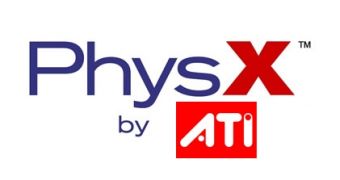Since the Santa-Clara based company has finalized the acquisition of Ageia, gaming users have been waiting for a graphics card that will implement the physics technology developed by Ageia. Although there have been extensive talks about NVIDIA's upcoming graphics card lineup, it appears that the real PhysX-enabled graphics card is yet to be unveiled.
And, because everybody thinks that NVIDIA is going to be the only manufacturer to have PhysX-enabled graphics cards, all eyes are on the Santa-Clara company. But this might soon change, as its biggest rival, AMD and its graphics subsidiary ATI, are said to be working on way of implementing physics technology for their future Radeons. And no, we are not talking about their HD 4000 series which is due for release in the weeks to come.
Some of you might remember ATI's shot at the physics technology, back when it released the R600-based graphics cards. At the time, ATI claimed that its solution could do better physics than Ageia's PhysX chip. Since then, ATI has apparently been working on a way to provide its users with physics support for its own Radeon GPUs. But this doesn't necessarily mean that ATI is going to be the first to release a PhysX card, meaning before NVIDIA. That will definitely be something no user is expecting.
ATI's advantage over NVIDIA consists in that it can also support Intel's Havoc, which allows it to play on both courts. However, we shall have to wait a while longer until we see any graphics card with true physics support. On top of that, NVIDIA's CUDA is not going to be supported by the GeForce 7 series graphics cards, or anything below the 7-series, for that matter. This is because CUDA needs shaders, which the GeForce 8 graphics cards were the first to receive.

 14 DAY TRIAL //
14 DAY TRIAL //